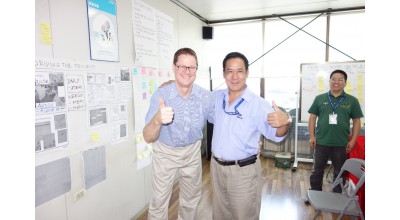In my daily work, improving innovation in globally leading companies, I experience two dominant problem areas –innovation level decreasing and overloading of innovation resources. These seem to be systemic and my thinking is that they are based on some ‘traps’.
Trap 1 - What I see is happening is, based on the past successes, companies are driving themselves into more of incremental innovation - and combined with systematic project delays, they lower the risk level over time. The commonly used StageGate approach also creates delays as defects introduced early are discovered late as it has a waterfall assumption. Some companies are starting to use agile approaches with fixed teams and continuous deliveries of features or smaller product steps, which has many benefits, but with that they are solidifying the incremental innovation approach. They become ‘feature machines’. This is a trap if you don’t want it to be like this – and to get out of that, the company needs to break this evil circle by rebalancing the work to more of front loading / predevelopment. To create innovation, companies need to work systematically and integrated with predevelopment, entrepreneurial innovation culture, systematic knowledge building, supplier innovation and innovation challenges – primarily from upper management and Product management. There need to be a substantial failure rate in the work before starting Product Projects, to accelerate learning, minimizing project risks and discover unexpected opportunities.
Trap 2 – Systematic Overloading of innovation resources is a tricky situation to manage. Symptoms are project delays, long projects, stressed people, less innovation. People are spread thin; the output from people is low.
The trap is that I have experienced that this is a stable situation by itself. There are some benefits for the organization being overloaded. Decisions are made by themselves. There are always excuses for not be ready on time or that a certain thing is done. Why do more right now as it will not help, the overloading is huge and cannot be changed only by me doing this or that. Also this situation creates a culture of heroes. Really skilled people saving situations, launches, customer problems etc. – and get a lot of visibility. I love these individuals, they are loyal, have deep knowledge about customers’ use of products, the products / systems, etc. They are always key assets in innovating new products. But, as they also tend to like the ‘hero’ situation, that can contribute to the trap. Another contributor is that the management culture can be of the style – ‘the more we press, the more output we get’.
It is tricky to get out of this trap as it is not easy to get good enough, leading and visible indicators so the teams and managers, in real time, can manage themselves out of the overloading. It is also counter intuitive to ‘lower the pressure’ to get higher output.
The way out of this trap, we use in the companies I work with, is the Agile and the Pulse idea – making as much as we can visual and team oriented. We focus on the output to get flow rather than resource utilization. We make cross-functional and committed team planning’s, using Synch Points – super clear and motivating shorter step targets. We support the driving in Innovation Pulse Rooms on company level. We challenge the innovation from the top and product management, pulsing the progress weekly. We have innovation days. We use an OnTime challenge to get stability and visibility of the overloading following and supporting the teams progress with the Synch Points weekly. We use the heroes to frontload projects to proactively avoid problems. We use Visual Portfolio management in the Pulse Rooms to, in real time, show the overall situation, the loading, the risks, the commitments, the delivery status, the balance between pre, new and continuous innovation, and the long term planning. We use a combination of stable teams and more dynamically allocated teams depending of the nature of the work. We challenge the PreDevelopment to observe users and using, to do extensive experiments, to test to fail and fail fast – to learn and get good Product Ideas.
These approaches create substantial results, makes the innovation work more manageable without sacrificing the innovation level. Owners, customers and teams are happier.
Read more or get in contact lundberginnovation.com
or linkedin.com/in/jannelundberg.
Janne is engaged in globally leading companies to radically improve innovation. He has used these approaches in his own work in more than 12 years and is now working as a consultant helping companies to use them. The latest company he used them in, has now been 4 years on Forbes list of 100 most innovative companies

